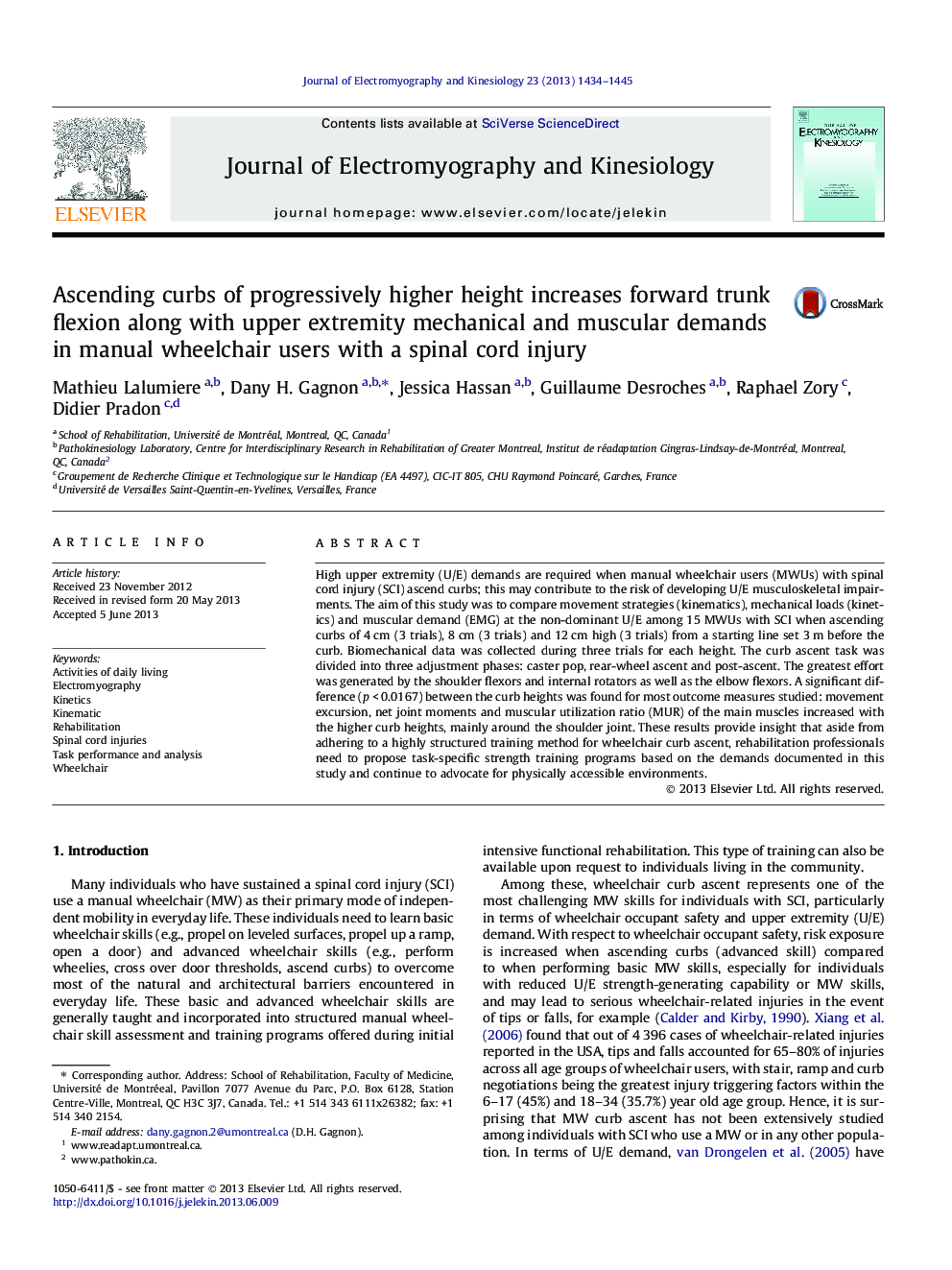| کد مقاله | کد نشریه | سال انتشار | مقاله انگلیسی | نسخه تمام متن |
|---|---|---|---|---|
| 4064823 | 1266226 | 2013 | 12 صفحه PDF | دانلود رایگان |

High upper extremity (U/E) demands are required when manual wheelchair users (MWUs) with spinal cord injury (SCI) ascend curbs; this may contribute to the risk of developing U/E musculoskeletal impairments. The aim of this study was to compare movement strategies (kinematics), mechanical loads (kinetics) and muscular demand (EMG) at the non-dominant U/E among 15 MWUs with SCI when ascending curbs of 4 cm (3 trials), 8 cm (3 trials) and 12 cm high (3 trials) from a starting line set 3 m before the curb. Biomechanical data was collected during three trials for each height. The curb ascent task was divided into three adjustment phases: caster pop, rear-wheel ascent and post-ascent. The greatest effort was generated by the shoulder flexors and internal rotators as well as the elbow flexors. A significant difference (p < 0.0167) between the curb heights was found for most outcome measures studied: movement excursion, net joint moments and muscular utilization ratio (MUR) of the main muscles increased with the higher curb heights, mainly around the shoulder joint. These results provide insight that aside from adhering to a highly structured training method for wheelchair curb ascent, rehabilitation professionals need to propose task-specific strength training programs based on the demands documented in this study and continue to advocate for physically accessible environments.
Journal: Journal of Electromyography and Kinesiology - Volume 23, Issue 6, December 2013, Pages 1434–1445